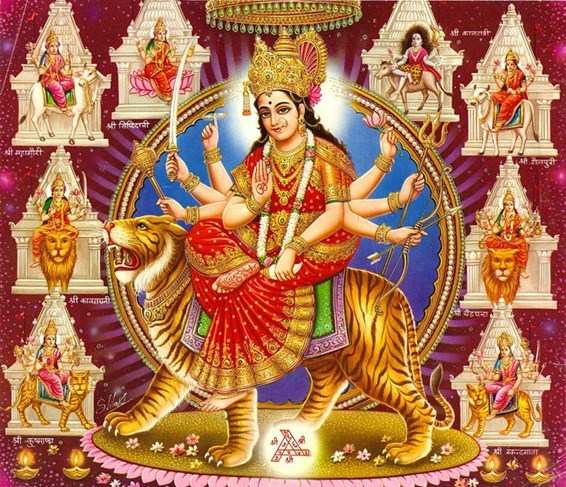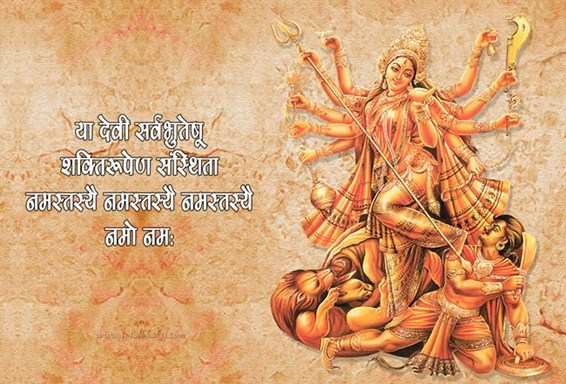Rarest of Rare Navratri after 34 Years: 5 must facts to Know& Ponder
Spiritual odes to offer Goddess Durga this Navratri would remain vibrant for 8 days only as this time the bright half of the Ashwin lunar month faces a merger of 3rd and 4th Tithi on the 18th October as per the H

Spiritual odes to offer Goddess Durga this Navratri would remain vibrant for 8 days only as this time the bright half of the Ashwin lunar month faces a merger of 3rd and 4th Tithi on the 18th October as per the Hindu almanac.
But, the Rarest and prolific combination of this Navratri would be its onset from the 16th October, Tuesday and ending on the next Tuesday itself i.e. on the 23rd October.
This exceptional combination took place 34 Years back in 1978 and would happen again in 2039 after 27 years.
Tuesday also happens to be the most liked day by Goddess Durga according to religious hymns and prayers. Astrologers acclaim this combo very rewarding for spiritual aspirants, chanters and Lord Hanuman’s devotees too as the Mars planet would be in its own zodiac sign and the Saturn would remain in its highest degree of zodiac sign during all the 8 days.
Main legend behind Navratri
Lord Brahma of the trinity Brahma, Vishnu & Shiva , granted Mahishasura the “buffalo demon,” a boon that protected him from any man in the world.
Empowered by this gift, egoistic Mahishasura set out to conquer the world, heaven and the world, and laid siege on the king of deities, Indra.
At the pleading of Indra, the king of the Gods, Lords Brahma, Vishnu and Shiva created Devi Durga, by combining their own divine powers (Shakti). Endowed with the trinity’s shakti, Durga proved to be a formidable opponent who fought Mahishasura for nine days, beheading him on the tenth day.
The nine nights known as Navratri, symbolize the nine days of battle between Devi Durga and Mahisasura, while the tenth day, which is Vijayadashami-literally means the victorious tenth day of conquest of good over evil.
Why worship the mother form – Goddess?
Many may ask “Why mother form; why not father?”. We believe that God’s glory, his cosmic energy, his greatness and supremacy can best be depicted as the motherhood aspect of God.
Just as a child finds all these traits in his or her mother, similarly, all of us look upon God as mother. In fact, Hinduism is the only religion in the world, which gives so much importance to the mother aspect of God because we believe that mother is the creative aspect of the absolute supreme power.
Symbolic meaning of the word ‘Durga’ and Portrayal
Maa Durga, the inaccessible one or the invincible one, is believed to be the “one who can emancipate in situations of utmost distress” and the one who has the qualities to accomplish the highest – the ‘Durg’.
The supremely radiant Mother Goddess is portrayed as having eighteen arms which signify that She possesses combined power of the nine incarnations of Lord Vishnu that have appeared on the earth at different times in the past and the tenth incarnation, the Kalki (a man on a white horse), is still to come.
She is portrayed on riding a lion, holding several weapons like Shiva’s Trident (Trishula), Rama’s bow, Vishnu’s Conch and Discus, Indra’s Vajra (lightning bolt) and Kubera’s mace etc.
She additionally holds a Kamandalu (water pot) given to her by Lord Brahma and a lotus flower. She wears a meditative smile and practices Mudras or symbolic hand gestures as a complete embodiment of the Sacred Feminine.
Durga is forever in a state of svaatantrya (self sufficient; independent of all other things in the Universe) which enables a human being curb the Tamoguna which is nothing but laziness, darkness, ignorance and anger removes these negative vibes and makes one qualify to attain success and prosperity to the worshipper destroying the animalistic tendencies in the human being.
Why celebrating twice a year?
Duration of a day and a night in India are almost equal during March-April and September-October which happens to celebrate Navratri festivals in these months. At these two junctures nature maintains equilibrium between climatic change and solar influence.
Being moderate seasons neither scorching heat nor chill cold; these are perfectly suitable for worshiping balanced energy form of our eternity. Chaitra Navaratri is beginning of summer and end of winter.
Similarly Ashwina Navaratri is beginning of winter and end of summer. Both seasons are crucial for our mental and physical health. Devotion and prayer keeps us mentally healthy whereas fast and other penance energize us to fight with diseases and keeps us healthy physically.
Ancient sages linked this period of worship to thank the divine powers properly that provides energy for the earth to move around the sun, causing the changes in the outer nature and maintaining the accurate balance of the universe.
Why nine nights and days?
Division of Navratri into sets of three days to adore different aspects of the supreme Goddess does have a great spiritual significance as Holy Scriptures depict.
On the first three days, the Mother is invoked as powerful force called Durga in order to destroy all our impurities, vices and defects.
The next three days, the Mother is adored as a giver of spiritual wealth, Lakshmi who is considered to have the power of bestowing on her devotees the inexhaustible wealth with joy.
The final set of three days is spent in worshipping the mother as the goddess of wisdom Saraswati in order has all-round success in life. Hence getting blessings of all the three aspects of the divine mother for nine nights and days is highly suggested for all the ardent devotees.
 Article by Naveen Pandya
Article by Naveen Pandya
To join us on Facebook Click Here and Subscribe to UdaipurTimes Broadcast channels on GoogleNews | Telegram | Signal



